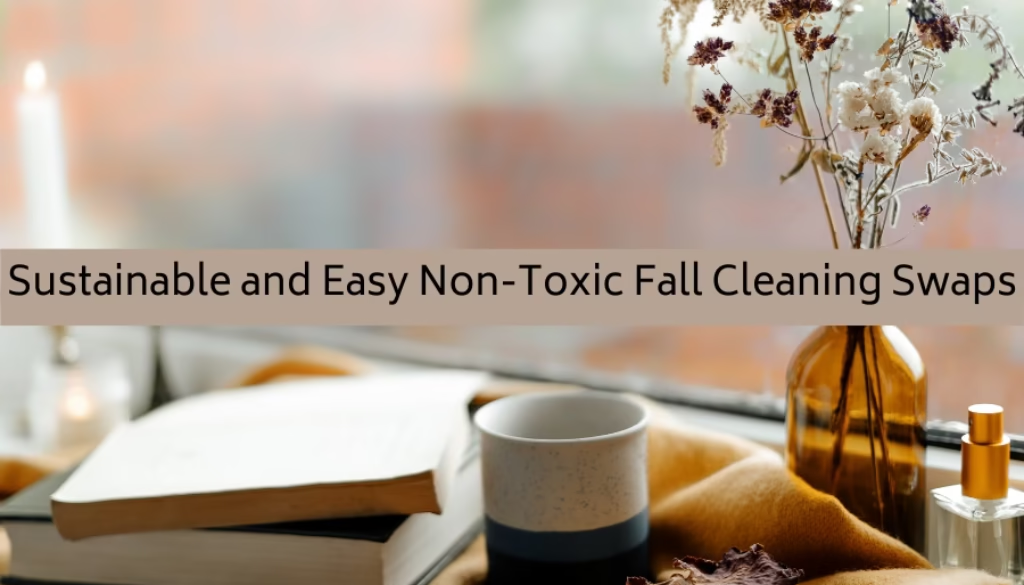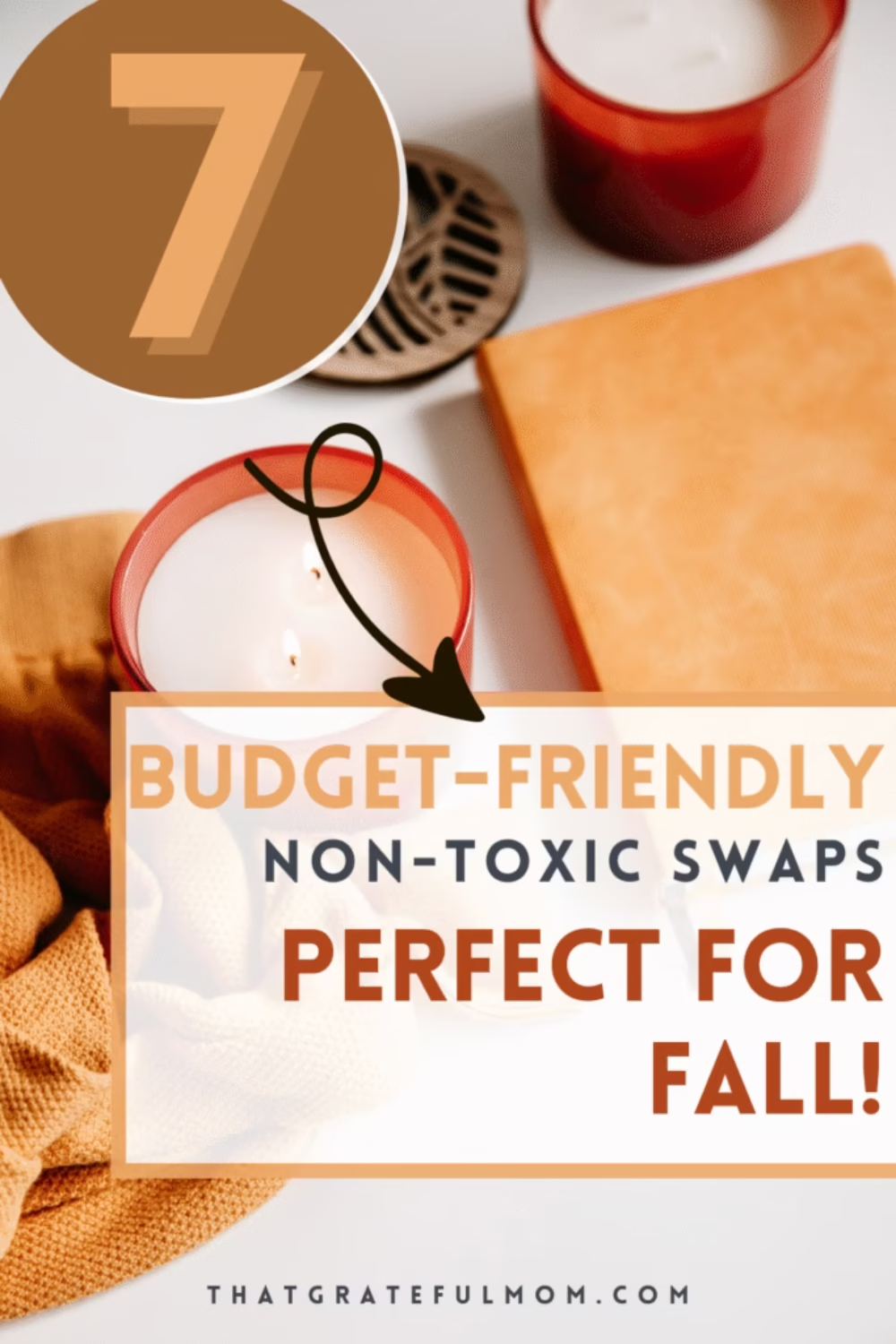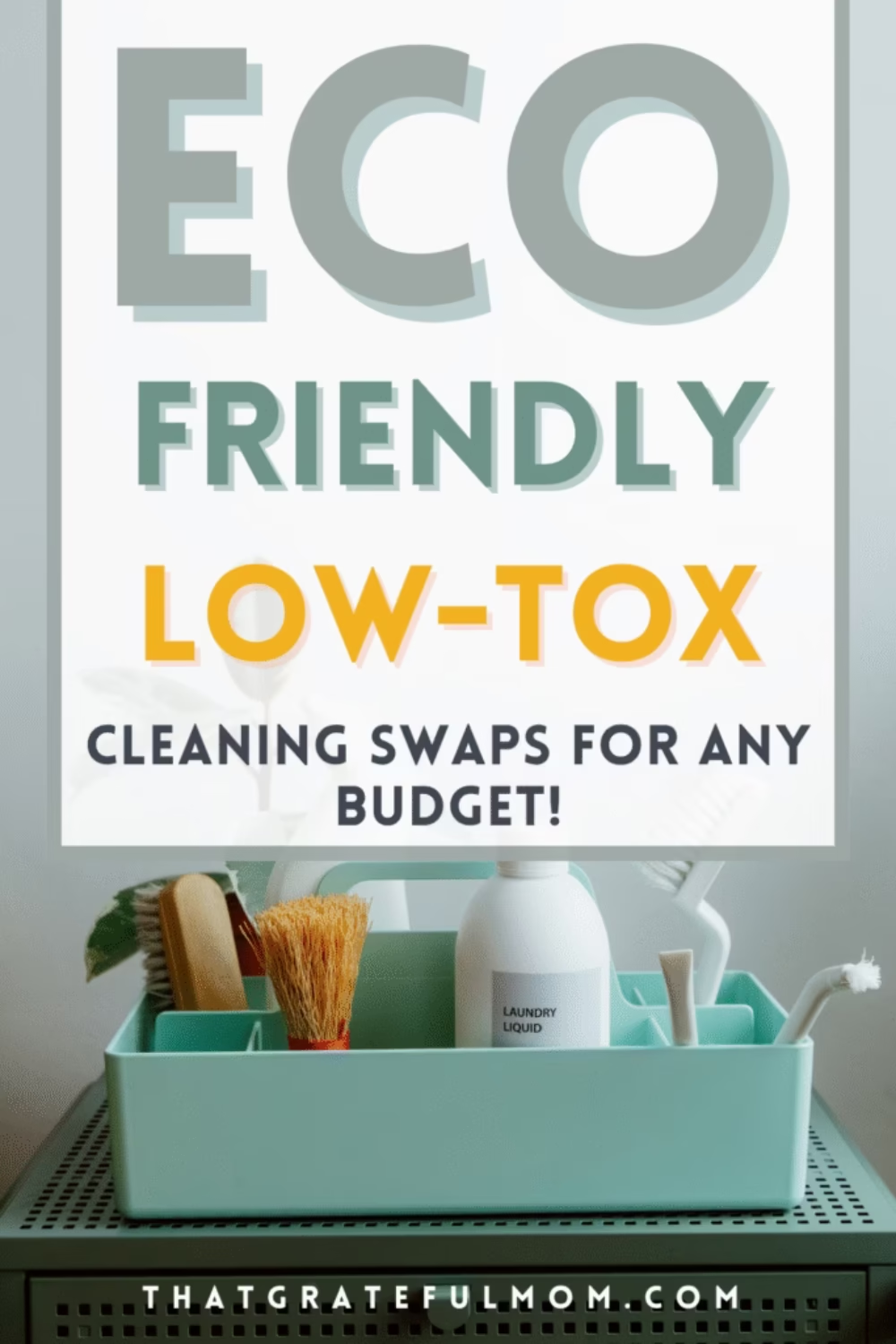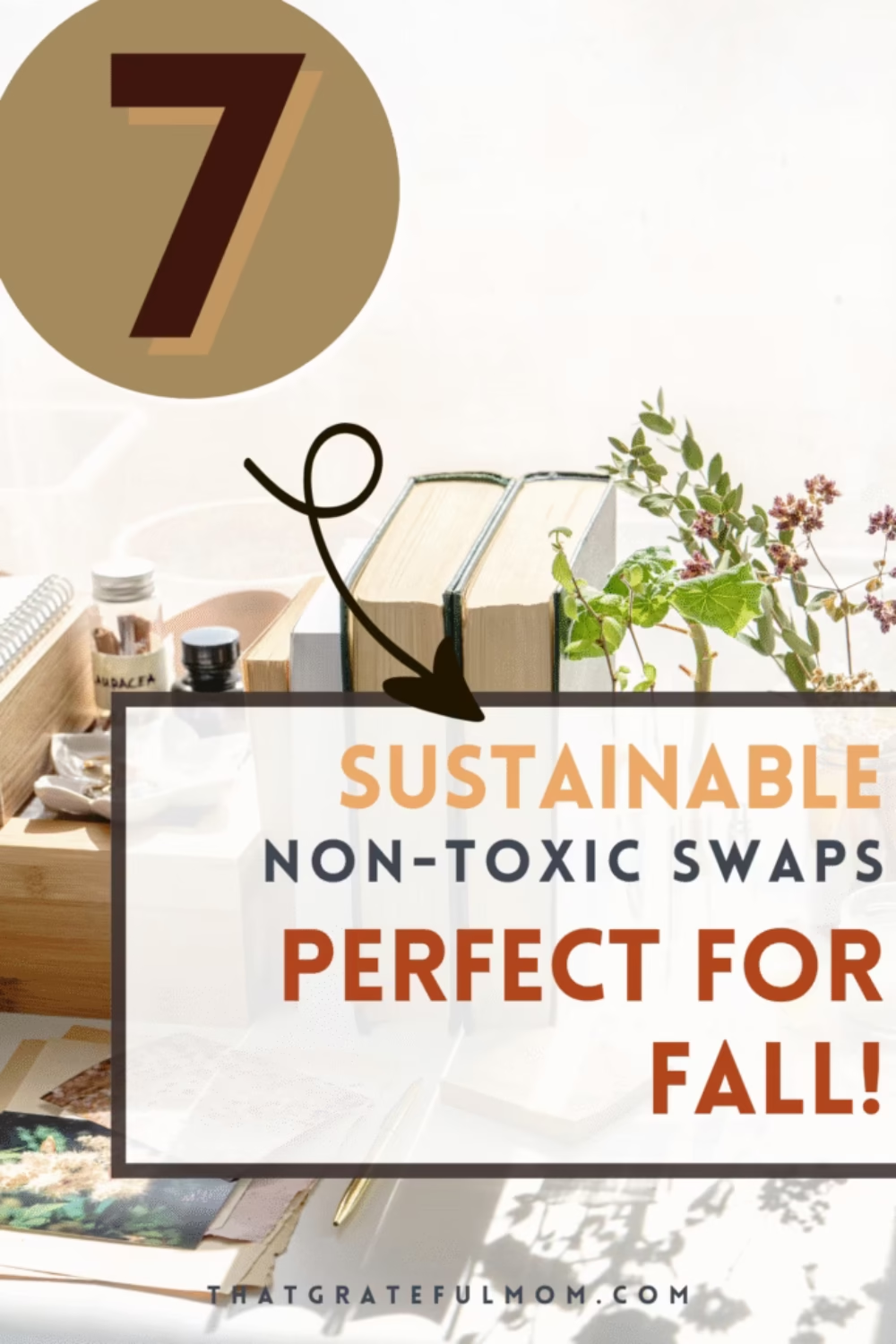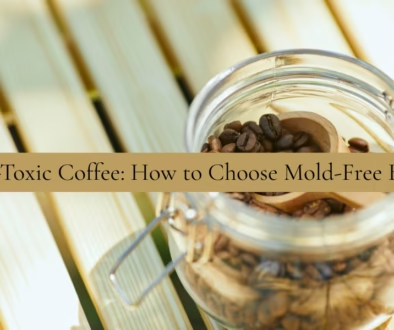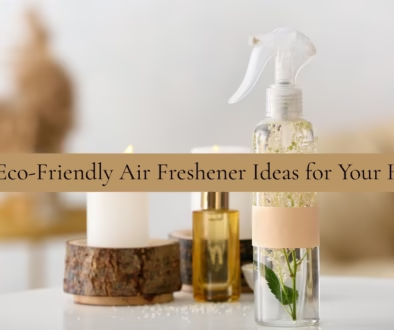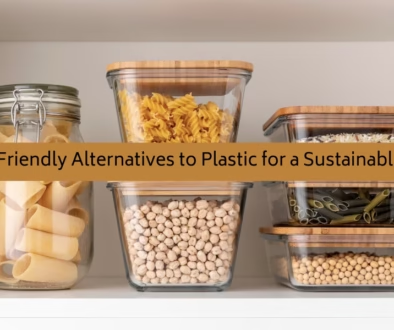Sustainable and Easy Non-Toxic Fall Cleaning Swaps
When the crispness of fall settles in, many of us feel the urge to clean and reset our homes. It’s the season of nesting and preparing our spaces for cozy nights, warm meals, and more time indoors. But before you reach for the usual cleaning supplies, consider the harmful chemicals that may be lurking inside them. This blog post will guide you through budget-friendly, non-toxic fall cleaning swaps, offering easy alternatives for everyday household items that protect your health, the environment, and your wallet! As a mom of six, I know how important it is to find budget-friendly options when cleaning up your routines!
What’s Really in Your Cleaning Products?
Many household cleaning products contain synthetic fragrances, toxic chemicals, artificial flavors, and other harmful ingredients that contribute to indoor air pollution, skin irritation, and even endocrine disruption. These substances can impact your respiratory system, endocrine system, and overall health, especially when you’re spending more time indoors during cooler weather.
The good news? Making healthier choices doesn’t require a complete lifestyle overhaul. You can start with small changes and simple swaps that significantly reduce your toxic load.
It’s easy to assume that the products lining store shelves, especially those for our homes, have been thoroughly tested and approved with our health in mind. We want to believe that if something is sold in stores, it must meet high safety standards. I used to think the same thing.
But here’s the truth: while I wish that were the case, many household cleaning products—including bath cleaners, counter wipes, laundry detergents, and other household cleaning products—contain ingredients that haven’t been thoroughly tested for long-term safety. Many products also contain synthetic fragrances, toxic chemicals, and other harmful substances that can have a subtle yet long-term impact on our health. In fact, out of an estimated 83,000 chemicals used in the U.S., the Environmental Protection Agency (EPA) has publicly evaluated safety data for only about 200 of them. Most Americans don’t realize that many of the chemicals in everyday products have never been thoroughly tested for safety.
The good news? You don’t have to overhaul your life overnight. With small changes and simple swaps, you can drastically reduce your family’s exposure to hidden toxins and create a safer, healthier home environment, especially during a season when we spend more time indoors.
What products should I be researching?
I could go on and on, but to give you a quick glimpse, here are just a few examples of known toxins and carcinogens commonly found in everyday household products:
Window cleaner
Most glass and window cleaners contain ammonia and isopropanol—ingredients that can irritate your eyes, skin, nose, and throat.
Rug & carpet cleaners
These products often contain chemicals such as perchloroethylene, naphthalene, and ammonium hydroxide. Exposure to the fumes has been linked to cancer, liver damage, dizziness, nausea, appetite loss, and even disorientation.
Air fresheners
Many air fresheners contain formaldehyde, petroleum distillates, p-dichlorobenzene, and aerosol propellants—all of which have been connected to cancer, brain damage, and respiratory irritation.
All-purpose cleaners
Common ingredients include ammonia, sodium hypochlorite, ethylene glycol monobutyl acetate, and trisodium phosphate. These can cause irritation to the skin, eyes, nose, and throat.
Bleach
Household bleach contains sodium hypochlorite and releases vapors that can irritate the eyes, skin, and lungs. Direct contact may lead to dermatitis, and wearing gloves is strongly recommended.
See the research from the Cleveland Clinic for even more info.
Beyond specific products, here are some common harmful ingredients you’ll find across many household items:
-
Parabens
These are known endocrine disruptors that can enter the body through the skin and have been linked to hormone imbalances, reproductive issues, and certain cancers. -
Diethanolamine (DEA)
Used to create foam in cleaners, DEA is a probable carcinogen banned in the EU. It’s linked to liver tumors and builds up in aquatic environments. -
Triclosan
Found in soaps and sanitizers, triclosan has been tied to hormone disruption and antibiotic resistance. The CDC reports it has been detected in the urine of over 75% of people tested. -
Fragrance
“Fragrance” may sound harmless, but it’s often a blend of dozens, or even hundreds, of undisclosed chemicals, many of which are linked to health concerns. -
Phthalates
These chemicals are commonly found in detergents and can damage the reproductive system, kidneys, and lungs. Studies in animals have shown harmful effects on developing testes. -
Formaldehyde
A well-established carcinogen that may cause asthma, headaches, skin rashes, and even leukemia. It’s found in many common cleaners, such as wood polish, floor cleaners, and bathroom sprays.
It’s overwhelming at first, but learning what’s in your products is the first step toward making safer, more informed choices. You don’t have to overhaul everything overnight, but awareness empowers you to take small, intentional steps toward a low-tox home.
Here are some super simple, non-toxic fall cleaning swaps you can make, even on a tight budget!
Easy Non-Toxic Fall Cleaning Swaps
Now that we’ve covered why it’s so important to pay attention to what’s in your everyday products, let’s dive into some easy and affordable changes you can start making today. These non-toxic fall cleaning swaps are simple, budget-friendly, and designed to help you reduce your exposure to harmful chemicals while still keeping your home clean, cozy, and fresh.
Swap 1: Conventional All-Purpose Cleaners
Most traditional purpose cleaners are packed with synthetic chemicals and toxic ingredients. For a safer and budget-friendly option, use white vinegar as a base and pair it with hydrogen peroxide (stored in separate bottles) to sanitize surfaces like the kitchen sink or stainless steel appliances. It costs pennies per bottle instead of $2-3, and you know exactly what products you’re using to clean surfaces in your home!
Important Note: Vinegar should not be used on granite or other natural stone surfaces, as the acidity can wear down the sealant and damage the stone over time. For granite countertops, a safer alternative is a diluted solution of rubbing alcohol (approximately 1/2 cup rubbing alcohol, 1 1/2 cups water, a few drops of dish soap, and optional essential oils).
Bonus Tip: Add natural essential oils like lemon or tea tree for added antibacterial properties and a fresh scent. Use glass spray bottles for safer storage and reuse.
If you’d rather not DIY this cleaning product, I completely understand! There are two brands I trust for cleaning supplies in my home that I’d love to share with you. Both are affordable and provide products that are safe and non-toxic.
Papa Bear Naturals offers a powerful, concentrated cleaning formula made with plant-based ingredients. It’s made here in the US and uses only the safest ingredients possible. In addition to their line of cleaning concentrates, their tallow skincare products are incredible.
Get 10% off when you shop through this link!
Force of Nature is an EPA-registered disinfectant system that uses just salt, water, and vinegar to create a hospital-grade cleaner at home. The starter kit includes everything you need to clean your home for months!
Get 40% off a starter kit through this link!
Swap 2: Dish Soap
Many conventional dish soaps, even ones marketed as “natural,” can contain synthetic fragrances, dyes, and surfactants that are harsh on skin and harmful to the environment. While brands like Seventh Generation have gained popularity, some consumers are beginning to recognize their use of greenwashing tactics and the presence of hidden toxic ingredients.
A better option is to switch to truly non-toxic products like Better Life Dish Soap, which uses plant-based ingredients and no synthetic fragrances. It’s gentle on sensitive skin, cuts grease effectively, and doesn’t leave behind a chemical residue on your dishes.
Another brand I love and personally use in my own home is Branch Basics. Their concentrated formula allows you to make your own dish soap, cleaning spray, and even laundry soap with just a bit of water and their signature non-toxic concentrate. It’s a great place to start if you want one cleaner to cover different things, and it truly works!
Tip: Always look for dish soap with a short, readable ingredient list and avoid anything with “fragrance” or “parfum” listed. This one small change can make a huge difference in reducing toxic load, especially in homes where dishes are washed by hand multiple times a day.
Swap 3: Air Fresheners
Air fresheners, paraffin wax candles, and plug-ins might smell pleasant, but they often release volatile organic compounds (VOCs), artificial fragrances, and other harmful chemicals into the air. These substances contribute to indoor air pollution and can impact your respiratory system and endocrine system over time, especially in closed-up homes during the fall and winter.
A safer and cozier alternative? Simmer pots. These are incredibly easy to make—just add orange peels, cinnamon sticks, cloves, or even a splash of vanilla to a pot with water and let it simmer gently on the stove. You’ll fill your home with a warm, inviting scent using only natural ingredients.
Another favorite option is using a diffuser with high-quality essential oils. Natural essential oils like eucalyptus, lavender, or cinnamon bark can help purify the air and offer calming or energizing effects, depending on what you choose. For a cozy fall feel, use oils like ginger, clove, and frankincense!
Tip: Choose a diffuser made from BPA-free materials and clean it regularly. Opt for essential oils without synthetic additives to avoid reintroducing hidden toxins.
Bonus Tip: Open windows when cleaning or diffusing oils to increase airflow and support better indoor air quality. If you’re dealing with fall allergies or dust, this is a great time to consider using a HEPA filter or an air purifier to reduce indoor air pollution further. This helps to ensure these non-toxic fall cleaning swaps don’t work against you.
Swap 4: Laundry Detergent & Fabric Softeners
Laundry soap is a major source of synthetic fragrances, toxic chemicals, and endocrine disruptors. These ingredients don’t just linger on your clothes—they can absorb into your skin and contribute to health issues over time. The good news is that there are safer, affordable swaps that still leave your clothes clean and fresh.
Simple Swaps:
-
Use wool dryer balls in place of dryer sheets
-
Choose non-toxic laundry detergent with a short, transparent ingredient list
One of my favorite natural detergents is Branch Basics. Their concentrated formula works incredibly well for laundry, and it’s especially helpful for families with sensitive skin. It’s made with plant-based ingredients and is free of synthetic fragrances, making it an excellent choice for reducing your home’s toxic load.
Another fantastic option is Truly Free, a subscription-based laundry system that offers refillable packaging and formulas free from harmful chemicals. Their products are safe, effective, and eco-conscious—plus they make it easy to maintain a low-tox routine with automatic deliveries.
For a limited time, my readers get 100 free loads with their first purchase! If you’ve wanted to try Truly Free, now is the time!
If you’re more of a DIY type, I also have a full post on how to make your own homemade laundry detergent. It’s a budget-friendly, natural recipe that skips the toxic cleaners and actually works! While I love and trust the brands I’m recommending today, I’ve found that my own recipe is even more successful, and costs just pennies per load.
These small changes in your laundry routine can make a huge difference in reducing hidden toxins that affect your skin, endocrine system, and overall indoor air quality.
Swap 5: Plastic Containers
Plastic containers are everywhere in our kitchens and homes because they’re lightweight and convenient. However, many plastics contain harmful substances, such as BPA and phthalates, which can leach into your food, particularly when exposed to heat from microwaves or dishwashers. These hidden toxins add to your family’s toxic load and have been linked to potential health risks, including hormone disruption and other long-term issues.
Switching to glass or stainless steel storage containers is a simple yet effective swap that makes a huge difference. Glass containers don’t absorb odors or stains, and stainless steel is incredibly durable and often more eco-friendly. Both options are safer for storing leftovers, packing school lunches, and even for on-the-go snacks.
When choosing containers, look for those with airtight lids to keep your food fresh and prevent spills. Bonus points if they’re dishwasher safe and easy to clean! Solid wood or bamboo lunch boxes can also be great non-toxic options for dry snacks.
For water bottles, opting for stainless steel or glass over plastic reduces your exposure to hidden toxins and keeps your drinks tasting fresh. Plus, these reusable options help reduce plastic waste, making them better for the environment too.
Shopping Tip: I personally recommend these trusted non-toxic storage and water bottle brands: Pyrex 7-pack, glass casserole dishes, and large storage dishes. These are durable, affordable, and perfect for busy families looking to make healthier choices.
Read my full review on eco-friendly food storage for even more options!
Swap 6: Toxic Cookware
When it comes to cooking, the materials you use can significantly impact your health. Many non-stick cookware options contain synthetic chemicals like PTFE and PFOA, which can release toxic fumes when heated to high temperatures. These substances contribute to your home’s toxic load and may pose potential health risks over time.
A safer and more durable alternative is cast iron cookware. Cast iron not only lasts for decades but also naturally adds a small amount of beneficial iron to your diet. Plus, when seasoned properly, it creates a natural non-stick surface without any harmful chemicals.
If cast iron isn’t your style, look for non-toxic cookware made from stainless steel, ceramic, or enamel-coated cast iron. These materials avoid the use of synthetic coatings and heavy metals, making them better choices for everyday cooking.
Budget-Friendly Tip: You can often find high-quality cast-iron and solid-wood kitchen items at thrift stores, flea markets, or on Facebook Marketplace. This is a great way to build a non-toxic kitchen without breaking the bank.
Care Tips: To keep cast iron in top shape, avoid soap and use gentle scrubbing with a brush or salt. After cleaning, dry thoroughly and apply a thin layer of oil to prevent rusting.
Affiliate Tip: I recommend investing in brands that prioritize non-toxic materials and sustainable production. Some of my personal favorites include Cuisinart, GreenLife, and Caraway. These brands offer durable, safe cookware options that support a healthier kitchen.
If you want to learn more about non-toxic cookware brands, check out my post on ceramic cookware here!
Bonus Fall Swap: Switch Out Seasonal Candles
Many seasonal candles are made with paraffin wax and synthetic fragrances, which can release volatile organic compounds (VOCs) and other harmful chemicals into your home’s air. These substances can worsen indoor air pollution and affect your respiratory system, especially during the fall and winter when we spend more time inside.
Instead of traditional candles, consider alternatives that create a cozy atmosphere without compromising air quality. Natural candles made from beeswax, soy, or coconut wax with natural essential oils offer a much safer option. They burn cleaner and often provide a subtle, inviting scent.
These non-toxic fall cleaning swaps extend beyond surface cleaning—they also help create a safer atmosphere for your family during the colder months when windows stay closed and fresh air is limited.
Or skip the flame entirely with a DIY simmer pot. Here’s a simple fall simmer pot recipe to try:
Simple Fall Simmer Pot Recipe
-
2 cups water
-
1 orange, sliced
-
2 cinnamon sticks
-
3-4 whole cloves
-
Optional: a few sprigs of fresh rosemary or a splash of vanilla extract
Combine all ingredients in a pot on the stove. Bring to a gentle simmer, then reduce heat to low and let it simmer, adding water as needed. Your home will fill with a warm, natural fragrance perfect for fall.
Improve Your Indoor Air Quality with HEPA Filters
Another great way to keep your home’s air clean is by using an air purifier with a HEPA filter. HEPA filters are highly effective at removing dust, allergens, and even some volatile organic compounds (VOCs) from the air, reducing indoor air pollution and helping protect your respiratory system.
Affiliate Tip: I recommend these trusted HEPA filter air purifiers: Levoit small room purifier, Levoit large room purifier, and Winix air purifier. They’re energy-efficient, quiet, and perfect for improving indoor air quality during the cooler months.
Personal Care Products to Watch
Cleaning supplies aren’t the only concern. Many personal care products, like non-toxic deodorant, face oil, and skincare products, can contain harmful chemicals, too. While it can feel overwhelming, remember to focus on one product at a time and only replace products as you run out. This helps you stick to your budget and find new products you’ll love.
Take a few minutes this fall to review your ingredient list on:
-
Skincare products
-
Personal care items
-
Personal care products like deodorant, lotion, and soaps
Check out some of my posts on non-toxic personal care products here:
Making Healthy Living a Lifestyle
Embracing non-toxic living doesn’t mean you have to make drastic changes all at once. In fact, the best way to create lasting healthy habits is by taking small, manageable steps that fit your lifestyle and budget. Over time, these small changes add up to a big impact, not just on your home environment, but on your family’s overall health and well-being.
Start by becoming more aware of the products you bring into your home. Take a moment to read ingredient lists and ask yourself if there’s a safer, non-toxic alternative available. Simple swaps, such as choosing natural cleaning products, non-toxic cookware, or safer personal care items, can significantly reduce your family’s exposure to harmful chemicals and hidden toxins.
Look for brands that prioritize transparency and sustainability. Certifications like the Global Organic Textile Standard (GOTS) for fabrics or EPA registration for disinfectants can help you make better choices without guesswork. When you support companies committed to safer ingredients and eco-friendly practices, you’re helping to build a healthier future for your family and the planet.
Remember, this journey is about progress, not perfection. It’s okay to take it one step at a time and focus on what feels doable for you. Celebrate your wins, whether that’s swapping out a single household cleaner or making your own natural laundry detergent, and keep building from there. The more you learn and adapt, the easier it becomes to live a truly healthy life!
This site may contain links to affiliate websites including Amazon. I may receive an affiliate commission for any purchases made by you through Amazon or other potential affiliates and no additional cost to you. Thank you for your support.

